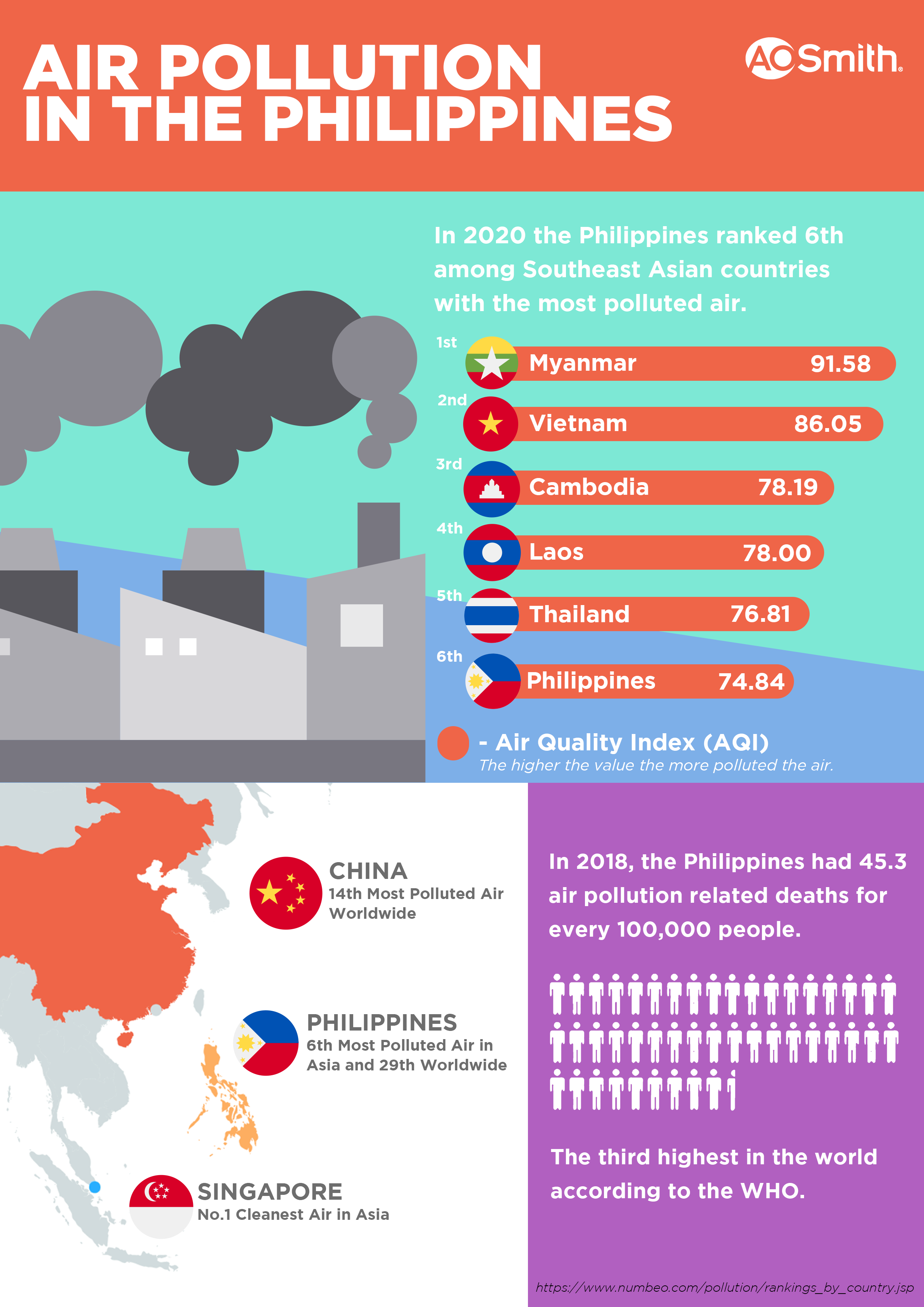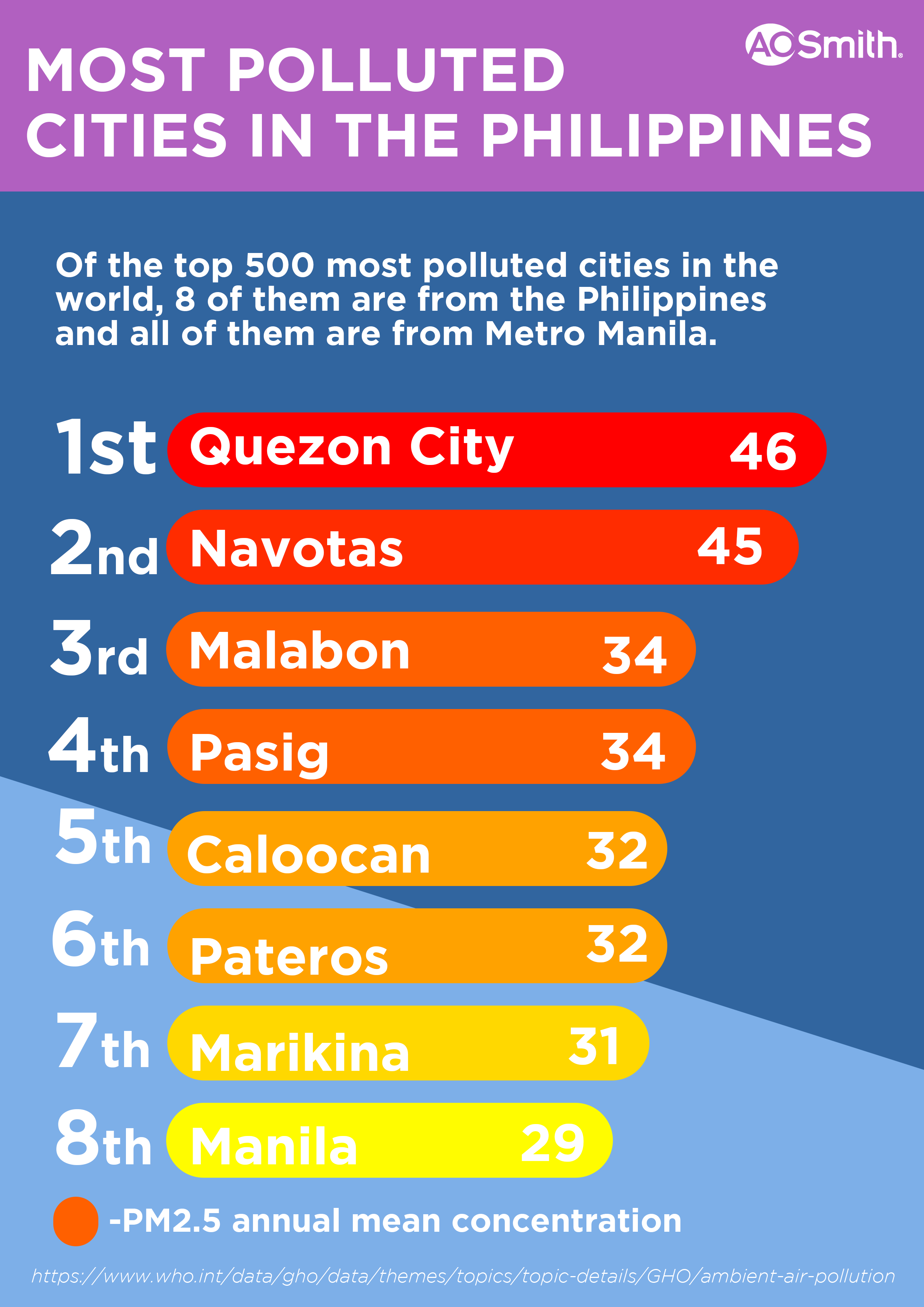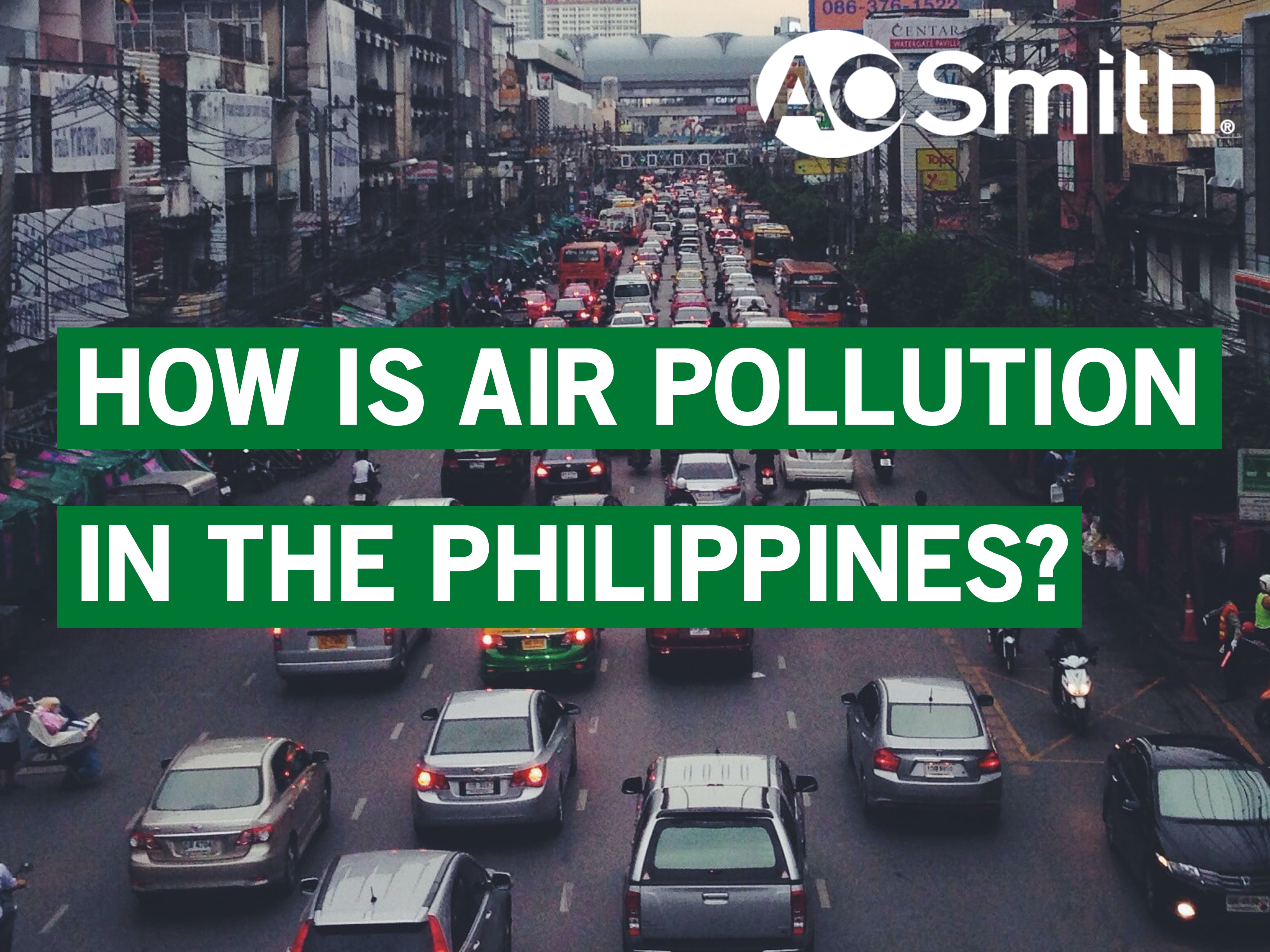A brief glimpse of better air
In the early weeks of the Philippine’s nationwide lockdown to prevent the spread of Covid-19 residents in the capital city of Metro Manila enjoyed a 40% to 66% decrease in PM 2.5 particles (1) found in the air compared to first month of 2020.
PM 2.5, which means particulate matter that are 2.5 micrometers in diameter, is known to cause many cardiovascular and respiratory complications when inhaled. The significant decline in PM 2.5 levels can be attributed to the sudden lack of activity from motor vehicles that releases carbon pollution in the air.
As lockdown measures begin to ease (2) the volume of motor vehicles and commercial activity have begun reverting back to their pre-lockdown figures inevitably bringing the air pollution they generate along with them.

How is air quality in the Philippines?
At the time of this writing Makati, Pasig, and Quezon City are the top 3 cities with the most air pollution in NCR (3) while Balanga in Central Luzon has the most air pollution nationwide according to the World Air Quality Index. In 2020 the Philippines also ranked fifth, just below Thailand, among Southeast Asian nations with the poorest air quality.

Even before the pandemic it was common to see average commuters donning facemasks to prevent direct inhalation of smoke generated by vehicles since most accessible forms of public transportation, particularly the jeepney, have open windows that expose its occupants to volatile organic compounds (VOC) being expelled by vehicles (4).
Public buildings such as malls and offices throughout the country also suffer from poor indoor air quality which inadvertently cost industries money each year in loss of productivity and medical expenses. (5) Building occupants may feel negative health effects within a few hours of breathing polluted air. These symptoms include headaches, fatigue, and dizziness.
What is the Philippines doing about air pollution?
Total Suspended Particulates (TSP) is a metric used to gauge air quality based on the amount of PM 2.5 and PM 10 particles in the air. Metro Manila’s TSP rating for 2004 was measured at around 171 micrograms per normal cubic meter ug/Ncm. It went down to 129 ug/NCM in 2009 but climbed back up to 150 ug/Ncm in 2010 (6). Six air quality monitoring stations across Metro Manila recording PM 2.5 pollutants measured 93 ug/Ncm in the first few hours of 2021. (7)
Despite the poor air quality of the country’s most population dense region, predictions by experts show a downward trend in TSP levels. This is in part due to concentrated efforts by local government units and nationwide programs to curb air pollution through policies such as anti-smoke belching campaigns and the establishment of bike lanes.
The latter half of the 2010’s saw the government advocating for the modernization of jeepneys either through the phasing out of old vehicles in favor of newer models that produce less emission to procuring models that use electricity as an alternate source of power entirely.(8)
Sick Building Syndrome
“Sick Building Syndrome” (SBS) is a term used to describe situations wherein occupants of a building experience adverse health conditions and discomfort that can be linked to their time spent in a building commonly due to poor indoor air quality.
Causes for SBS may include poor ventilation, off-gassing of VOC from furniture, biological contaminants in the air, and chemical contaminants from outdoor sources.
Symptoms of SBS are commonly seen in people working clerical jobs and are more likely to occur in air-conditioned buildings than in naturally ventilated buildings.
It is important to note that the cause for SBS is difficult to pinpoint as the severity of effects vary with each person and are oftentimes largely subjective as detailed by the people experiencing it. Certain smells can lead a person to experience SBS for example. Air quality is simply the most common SBS inducing culprit but factors such as poor lighting may contribute as well. (9)
How can you improve indoor air?
Regularly cleaning dust off surfaces can prevent the accumulation of particles that could otherwise be agitated and suspended in the air, triggering allergic reactions when inhaled. Houseplants can also be responsible for collecting and fostering the growth of mold indoors so while they do improve indoor air quality by producing oxygen it might be in the best interest of people susceptible to allergies to keep them outside (10).
Investing in air purifiers equipped with HEPA and carbon filters is also a proven method to cut down on the amount of particle and VOC contaminants found in indoor air. HEPA air purifiers see frequent use in environments susceptible to air contamination such as hospitals, restaurants, offices, and kitchens.
HEPA filters are 99.97% efficient at removing contaminants of the most penetrating particle size. These include pollutants such as dust particles, pollen, pet dander, and even microscopic organisms such as viruses. Air purifiers fitted with active carbon filters can also remove VOCs and formaldehyde, a carcinogenic gas emitted by common household items like adhesives, cleaning products, wood furniture, and building materials.
Improving the factors you can control to breathe cleaner air
While the condition of outside air can be largely unpredictable, the quality of indoor air is something you can actively take measures to try and improve. The return of air pollution amidst the easing of lockdown restrictions can be an opportunity to be more conscious of the indoor air quality in the spaces we occupy. Practicing room hygiene and using air purification devices can be beneficial to you health in the long term.
Related Articles:
VOC and Formaldehyde and Why It's Bad For Indoor Air
https://www.aosmith.com.ph/blog/voc-and-formaldehyde-why-its-bad-indoor-air-and-what-do-about-it
Why The HEPA Standard Matters
https://www.aosmith.com.ph/blog/buying-air-purifier-why-hepa-standard-matters
Can Air Purifiers Protect You Against Covid-19?
https://www.aosmith.com.ph/blog/can-hepa-air-purifiers-protect-you-against-covid-19
Sources:
(1)
(2)
(3)
(4)
https://www.ncbi.nlm.nih.gov/pmc/articles/PMC3770838/
(5)
(6)
(7)
https://www.medicinenet.com/sick_building_syndrome/definition.htm
(8)
https://newsinfo.inquirer.net/1378965/lower-air-pollution-recorded-in-metro-on-new-years-day
(9)
https://www.tandfonline.com/doi/abs/10.1174/217119710792774843?journalCode=rprb20

